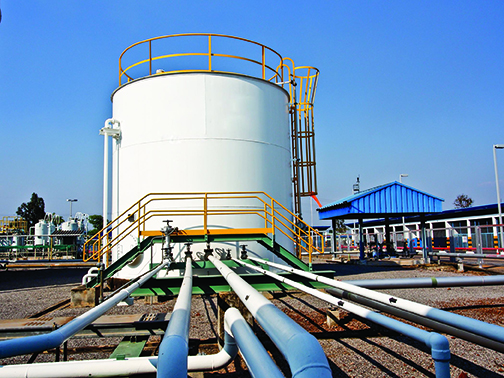The National Iranian Gas Company and Russia’s Grasys have signed a contract on constructing a pilot gas sweetening unit in Bushehr's Fajr-e-Jam Gas Refinery, in which membrane gas separation technology is due to be indigenized.
“Based on the contract, the operational phase of the project, which includes construction and installation of the pilot unit, will start in the next [Iranian] year (begins March 20),” Hassan Shamshiri, deputy for engineering and development at Fajr-e-Jam Gas Refining Company, told Shana.
The Russian research and production company Grasys sets up units for gas production and separation. The company also implements EPCM (engineering, procurement and construction management) contracts in the field of gas separation. Grasys offers equipment based on all three technologies of gas separation: membrane, adsorption and cryogenics.
Shamshiri said the refinery can only process gas with 1000 PPM and to receive gas from South Pars Gas Field, the PPM of which being 5000, the membrane gas separation technology must be utilized.
The refinery went on stream in 1988 to process the gas from Nar and Kangan gas fields located in Jam and Riz in the east of Bushehr province in southern Iran. In spite of the fact that the initial processing capacity stood at 85 million cubic meters, it increased to 110 million cubic meters in 2006 pursuant to the implementation of the capacity boosting project.
The refinery processes 125 million cubic meters of natural gas per day. Moreover, 25% of the whole gas used in the country are supplied by the company.
Hadi Hashemzadeh-Farhang, managing director of the company, also announced that under a plan to produce liquefied petroleum gas from flare gas, the refinery produces 45,000 tons of LPG per year.
“Apart from a 45,000 tons LPG output, which earns $15 million in annual revenue, the plan has a significant influence in decreasing pollutant emissions,” he said.
Referring to the 95% progress of the project, the official said LPG production under the plan will reach 200 tons per day upon completion.
According to the official, 37,500 tons of LPG were produced in 10 months ending January 20, which was 4% higher than the expected output.
Hashemzadeh-Farhang pointed to a plan based on which the refinery will raise the volume of gas received from South Pars by 50 million cubic meters and said the project will materialize in three years.
The refinery exports 6.7 million barrels of gas condensates to the East Asian countries, including South Korea and Japan, through Siraf Port facilities.


